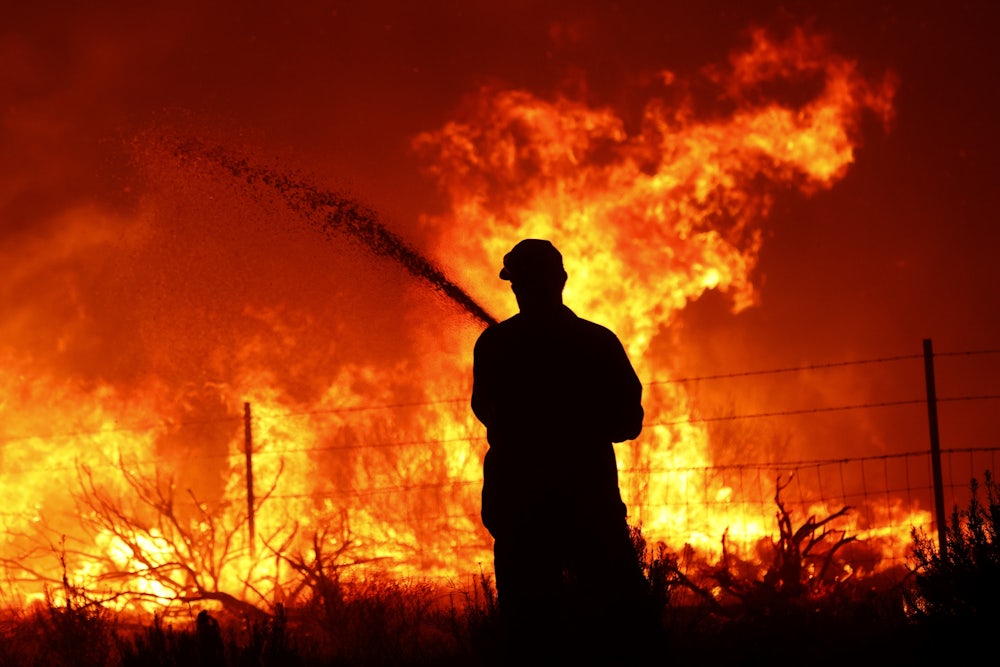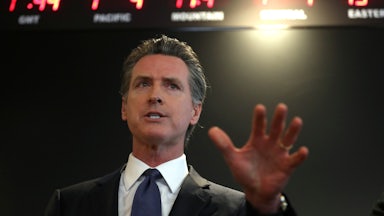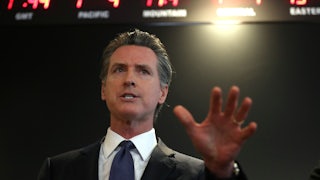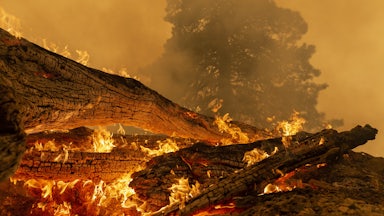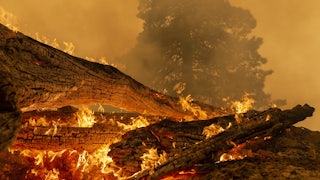How did New York Governor Andrew Cuomo, who is set to resign this month after sexual harassment allegations and a cover-up of nursing home deaths from Covid-19 came to light, become lionized as a national leader in the pandemic’s early months? He wasn’t the only governor to hold daily news briefings on the virus’s progress or issue strict emergency orders to check its spread. His ascent to national fame didn’t reflect any actual success, either: The bulk of New York’s Covid-19 deaths occurred while people were buying “Cuomosexual” sweaters and coffee mugs.
What set Cuomo apart from other governors was an accident of geography. New York is home to a disproportionate amount of the nation’s broadcast, print, and digital news outlets, and the coverage of Cuomo reflected that bias. Vanity Fair hailed him as “an essential counterpoint to the Trump circus” and floated him as a future presidential candidate. CNN, MSNBC, and other national networks often aired his briefings live and uninterrupted. (They did not repeat this practice for other governors when the virus slammed into their states.) Among the thousands of journalists who call New York home is Cuomo’s brother, Chris, who regularly brought the governor on his eponymous show for friendly banter as the virus devastated the state.
Last December, Governor Cuomo even received the International Emmy Founders Award for “his leadership during the Covid-19 pandemic and his masterful use of television to inform and calm people around the world” earlier that year. “The governor’s 111 daily briefings worked so well because he effectively created television shows, with characters, plot lines, and stories of success and failure,” Bruce Paisner, president of the International Academy of Television Arts and Sciences, said when announcing the award. “People around the world tuned in to find out what was going on, and ‘New York tough’ became a symbol of the determination to fight back.”
Cuomo’s Covid-19 stardom is an unusually clear example of the dangers of centralizing so much of the nation’s media infrastructure in a single area. New York City and the Northeast are essential parts of the American civic fabric, but they reflect only part of the national experience. As long as news organizations are centered on the East Coast, both physically and mentally, the country’s political discourse will suffer for it.
How bad is the problem? In 2019, a Pew Research Center analysis of Census Bureau data found that 12 percent of all U.S. newsroom employees—reporters, editors, photographers, and so on—live in New York City. The same survey found that only 7 percent of the U.S. working-age population lives in New York City, suggesting that there is an excessive concentration of reporters in the Five Boroughs. Five percent of newsroom employees live in Washington, D.C., where a disproportionate amount of national news happens, while another 5 percent live in Los Angeles, the nation’s second largest city.
Local newspapers and TV stations have long kept this geographic imbalance in check: Pew’s analysis found that newsroom employees for both are roughly proportionate to the working-age populations in the Midwest, Northeast, South, and West. But the rise of digital news sites over the last 20 years has tilted things further toward New York City and the East Coast in general. Though only 18 percent of American workers live in the Northeast, 41 percent of digital newsroom employees can be found there. One-tenth of all digital journalists live in the Midwest, compared with 22 percent of workers overall. More than one-third of American workers live in the South, where just 21 percent of digital journalists reside.
A changing media landscape is worsening this trend. The number of newsroom employees at U.S. newspapers plummeted from about 71,000 in 2008 to around 30,000 in 2020, according to a separate Pew analysis. During that same period, digital newsrooms more than doubled in size, from roughly 7,400 employees in 2008 to more than 18,000 in 2020. (TV and radio outlets either saw slight declines or remained roughly stable.) Compounding the problem is that it’s not a one-for-one shift: Newspapers lost 41,000 jobs over those 12 years, while digital publications added only about 10,000 of them. Not only is the nation’s bulwark against geographic concentration in journalism crumbling, its erstwhile replacement is accelerating the problem.
A frustratingly subtle way that geographic bias affects the news industry can be observed in the way climate change is covered. Federal officials declared a water shortage in the Colorado River for the first time earlier this week, likely leading to water cuts across the Southwest. It was a one-day story for most national news outlets. The Dixie Fire in Northern California has already burned more than 700 square miles—more than double the size of New York City—and swallowed whole small towns like Greenville. Over the past 48 hours, the blaze began advancing toward the former logging city of Susanville, where roughly 15,000 people reside and my grandparents once lived.
National news outlets do cover the Western wildfire season when it happens, but rarely with the depth or attention that hurricane season receives; the fact that a smaller share of news photographers and reporters reside out West means fewer images of the apocalyptic scenes make their way into the national imagination. Last September, New York Times columnist Charlie Warzel described how relocating to the West Coast radically altered his perspective on these stories: “Since I moved West, I’ve been preoccupied with this question: Would Americans feel a greater sense of alarm about our rapidly warming planet and the disastrous, perhaps irreversible effects of climate change if everyone could experience a fire season in person?”
The stifling blanket of wildfire smoke that afflicts many Western states each summer received an unusual surge in attention this year only because it became noticeable on the East Coast. I can’t help but wonder what the news coverage would look like if a wildfire more than half the size of Rhode Island were burning in the Appalachians or the Alleghenies, threatening small towns in Pennsylvania or upstate New York and covering cities like Baltimore and Philadelphia in a thick, choking haze.
It’s hard to quantify exactly how much coverage a story actually receives or should ideally receive, of course. Afghanistan, for example, would have dominated news coverage over the past few weeks no matter what. But consider the plight of another beleaguered governor of a populous blue state: California’s Gavin Newsom, who faces a high-stakes recall vote on September 14. Conservative activists launched the recall campaign last year to harness simmering discontent toward Newsom’s Covid-19 measures. They were aided by right-wing donors across the country, who poured money and manpower into California to aid the signature-gathering campaign.
The recall campaign’s greatest boost, however, came from none other than Newsom himself. Last November, the governor—who had imposed some of the strictest Covid-19 measures in the nation and implored Californians to avoid gatherings—was photographed indoors without a mask at a lobbyist’s birthday party at a luxurious Napa Valley restaurant. Newsom’s political standing hasn’t recovered from the Bourbon-like fete, with recent polls showing a dead heat on the vote to recall. And thanks to California’s two-step recall method, his potential replacement could win with far fewer votes than the incumbent receives. The current frontrunners are Larry Elder, a Trump-aligned radio host, and Kevin Paffrath, a 29-year-old YouTube influencer and landlord.
It’s entirely possible that California—the home of nearly 40 million people, a longtime Democratic stronghold, and the world’s fifth-largest economy—could be run next month by one of those two people. And yet how much coverage of the recall have you seen compared with the rise and fall of Andrew Cuomo? The good news is that the pandemic proved that many journalism jobs can be done from, well, just about anywhere. If national news organizations abandon the flawed idea that you have to be in New York City or Washington, D.C., to be a reporter, the country will be all the better for it.
